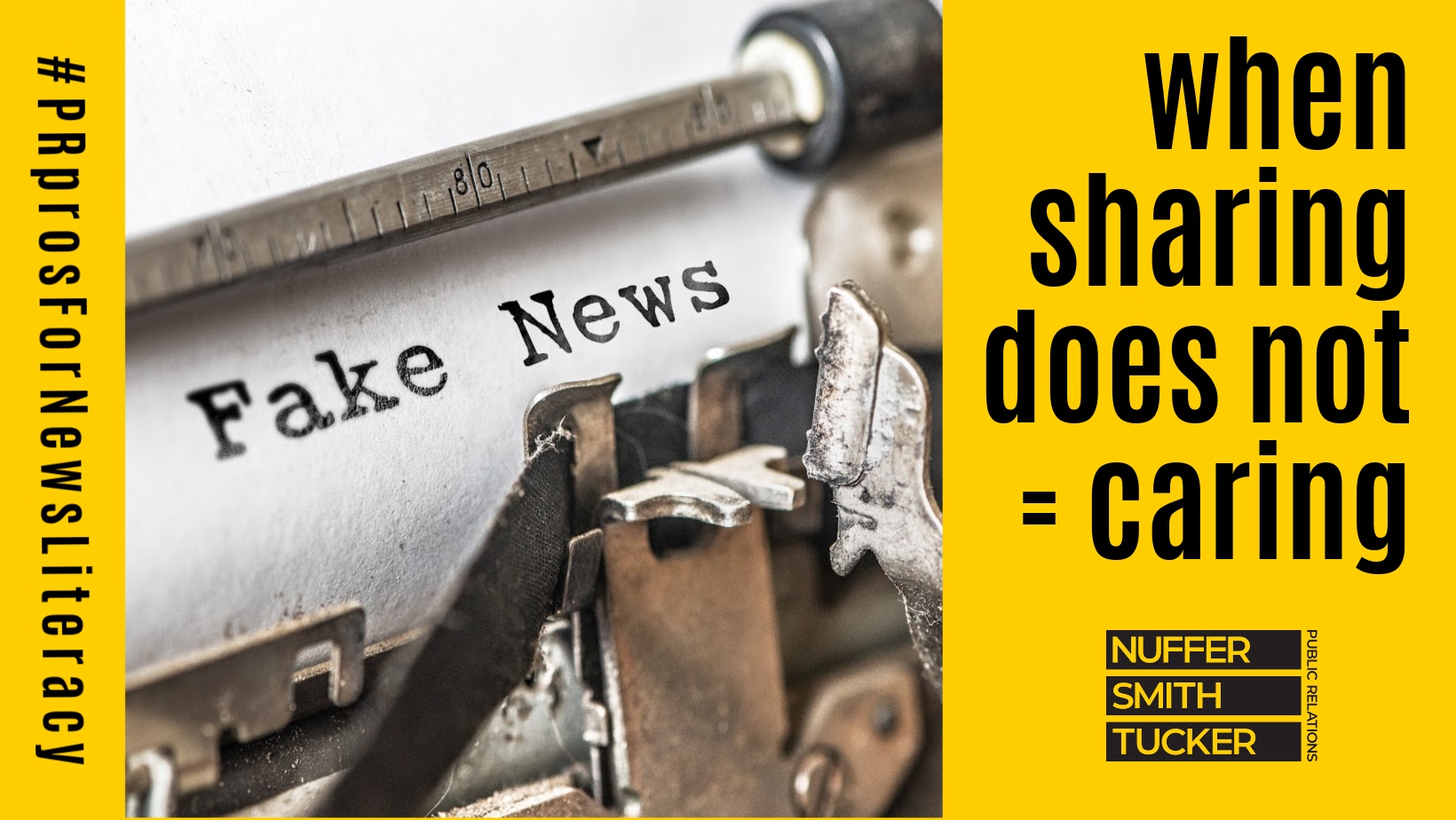As purveyors of news, all of us in the PR industry have a responsibility to help make the world more news-literate. We must stamp out mis- and disinformation and fake news and shine a spotlight on fact-based journalism. But how?
News literacy is the ability to determine the credibility of news and other content, to identify different types of information, and to use the standards of authoritative, fact-based journalism to determine what to trust, share and act on. Misinformation is false information that one spreads because they believe it to be true. Disinformation is false information that one spreads even though they know it to be false. And fake news is purposefully crafted, sensational, emotionally charged, misleading or totally fabricated information that mimics the form of mainstream news.
Fake news and mis- and disinformation aren’t new, but their impact has grown with the ease of sharing across social channels. Most recently, we are witnessing egregious examples of this with the flood of mis- and disinformation and fake news around the conflict in Ukraine and over the past two years around the COVID-19 pandemic and vaccines.
The more we are aware of what false information is and how it spreads, the better we will be at avoiding it ourselves – and helping our colleagues, friends, and family do the same.
According to a recent Pew Research study, only 26% of surveyed U.S. adults could correctly classify all five factual statements presented to them and only 35% could correctly classify all five opinion statements presented to them. In a separate study conducted by Stanford, 96% of surveyed U.S. high school students failed to challenge the credibility of an unreliable source. Even though education levels have generally gone up, consumers of news increasingly struggle to identify fact from opinion or real news from fake.
As an industry tied so closely to news, we must lead by example. In our own lives, PR professionals must not be fooled by propaganda and falsehoods designed to elicit emotional responses and quick shares. We must stick to the facts and be our news-literate best.
How can PR pros get involved?
The News Literacy Project (NLP) is a nonpartisan national education nonprofit that provides programs to teach, learn and share the abilities needed to be smart, active consumers of news and information and equal and engaged participants in a democracy. PR professionals interested in joining the fight for news literacy should check out the resources offered by The News Literacy Project, including its Checkology e-learning platform, Informable mobile app, Is that a Fact? podcast, Viral Rumor Rundown Blog, and annual news literacy event.
When you see a post and you are unsure of the source’s credibility:
- Don’t initially re-share the post
- Use this NLP infographic to vet the post
Use Fact-Checking Sites
- org – A project of the Annenberg Public Policy Center of the University of Pennsylvania. Monitors the factual accuracy of political speeches, debates, news stories and other communications.
- Politifact – A project of the Tampa Bay Times, Politifact is an independent, nonpartisan fact-checking website that rates the accuracy of claims by elected officials and others who speak about American politics.
- Snopes – An evidence-based source for fact checking urban legends, folklore, myths, rumors, and misinformation.
Try a Reverse Image Search
In a reverse image search you use a search engine that takes an image as a “search term” and returns results related to the image. Search engines that offer reverse image capability include Google and TinEye. Some websites, such as Reddit, also provide reverse image search capabilities. You can use a reverse image search to locate the source information for an image, to search for duplicated content (where else has your image appeared?), to ensure compliance with copyright regulations, to find information about unidentified products and other objects in an image, and ultimately to debunk doctored images. If you’re interested in learning how to do a reverse image search, here is a helpful break down from NLP’s Peter Adams: https://bit.ly/risNLP
Try the SIFT Method
The SIFT method by Mike Caulfield provides four quick moves you can do when evaluating an online source. Mike worked with students and faculty to identify the core skills and habits that citizens are missing that leave them vulnerable to mis- and disinformation on the web. He organized them into a model he calls SIFT: Stop, Investigate the source, Find better coverage, and Trace claims, quotes and media to the original context. You can learn more about using the SIFT method to sort fact from fiction related to COVID-19 at Sifting Through the Coronavirus Pandemic.
Working together, PR professionals should take the lead, helping people identify credible information, seek out reliable sources, and know what to trust, what to dismiss and what to debunk. Are you in? Use the hashtag #PRprosForNewsLiteracy to share this post!



